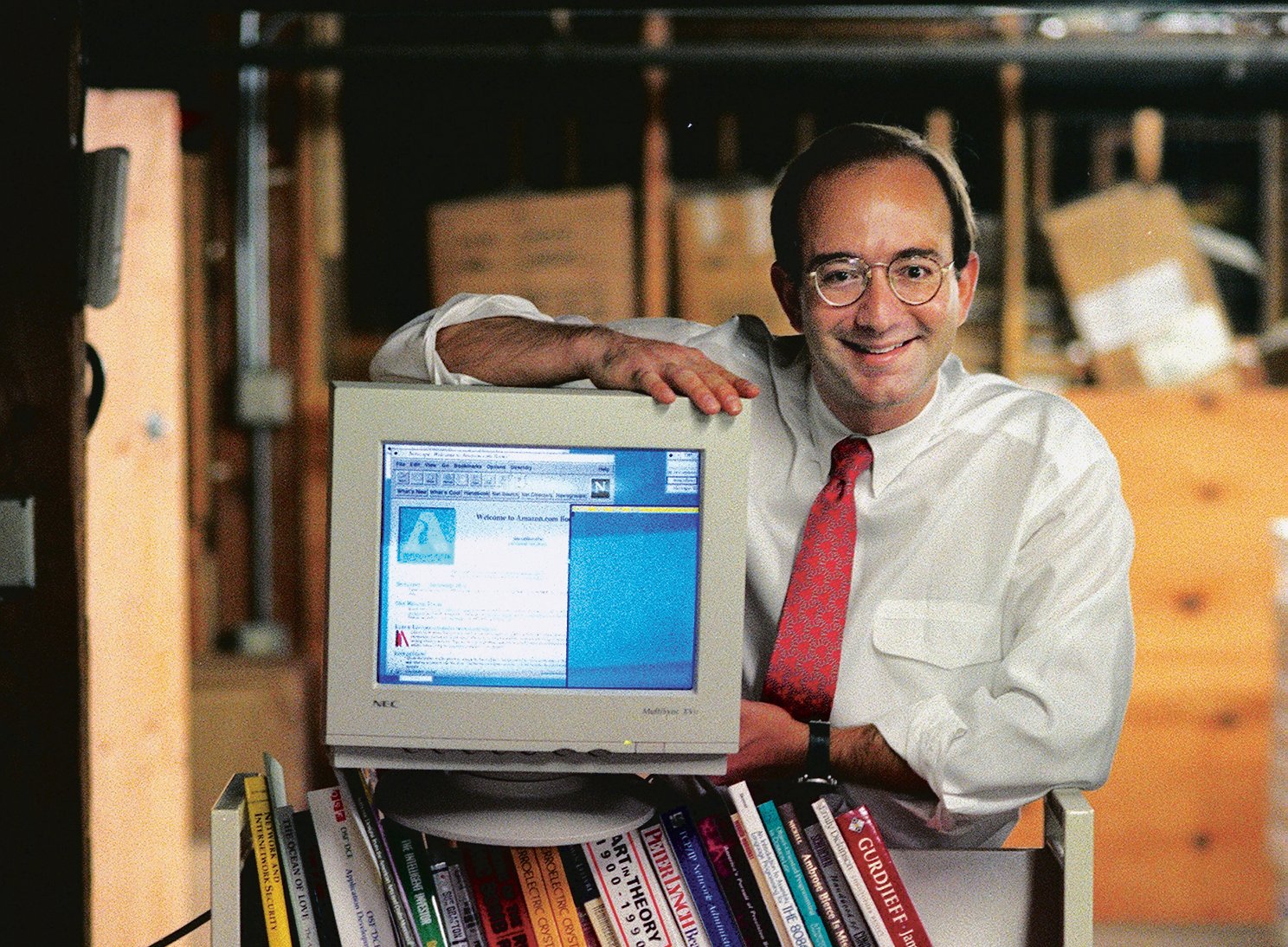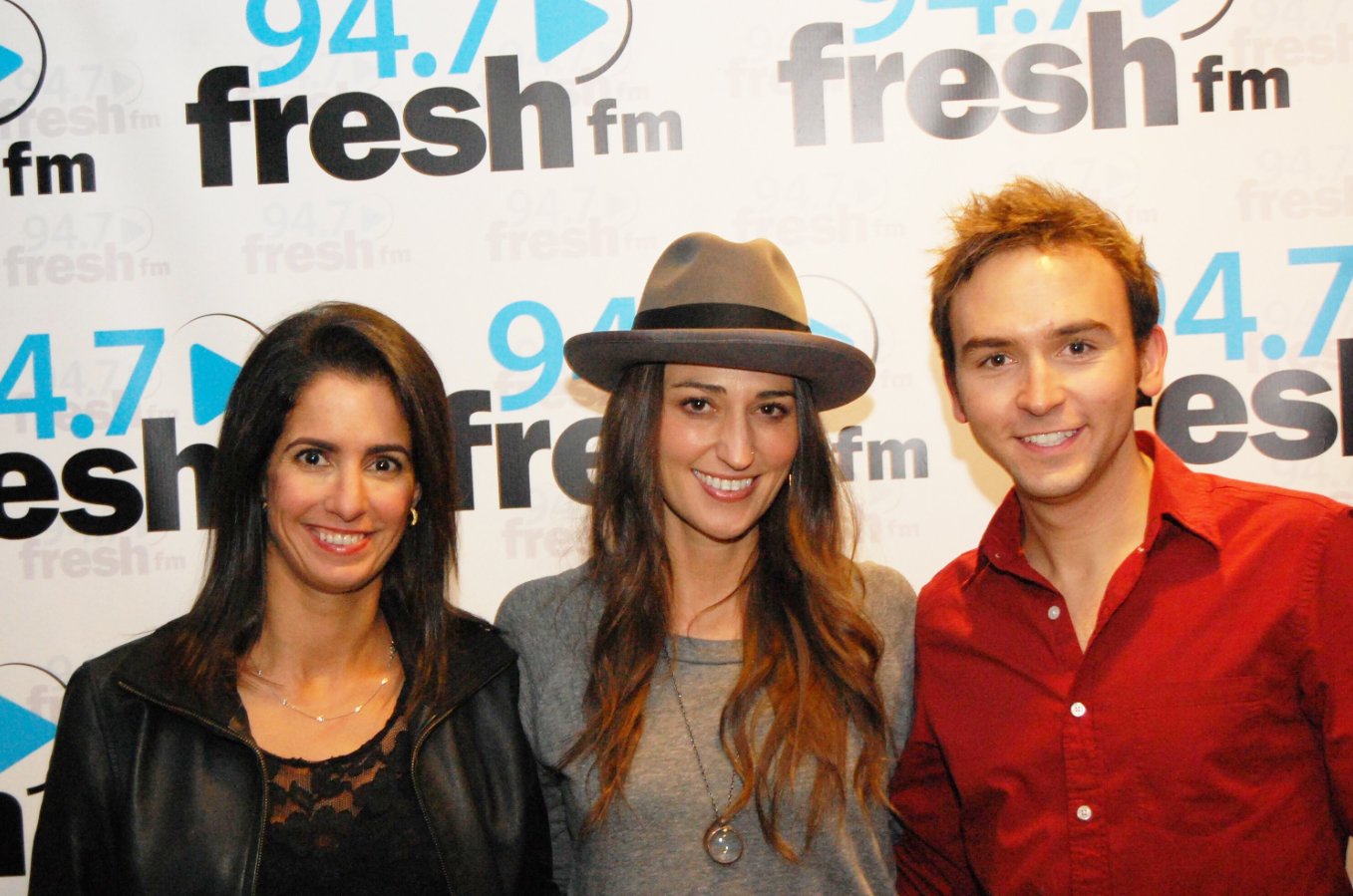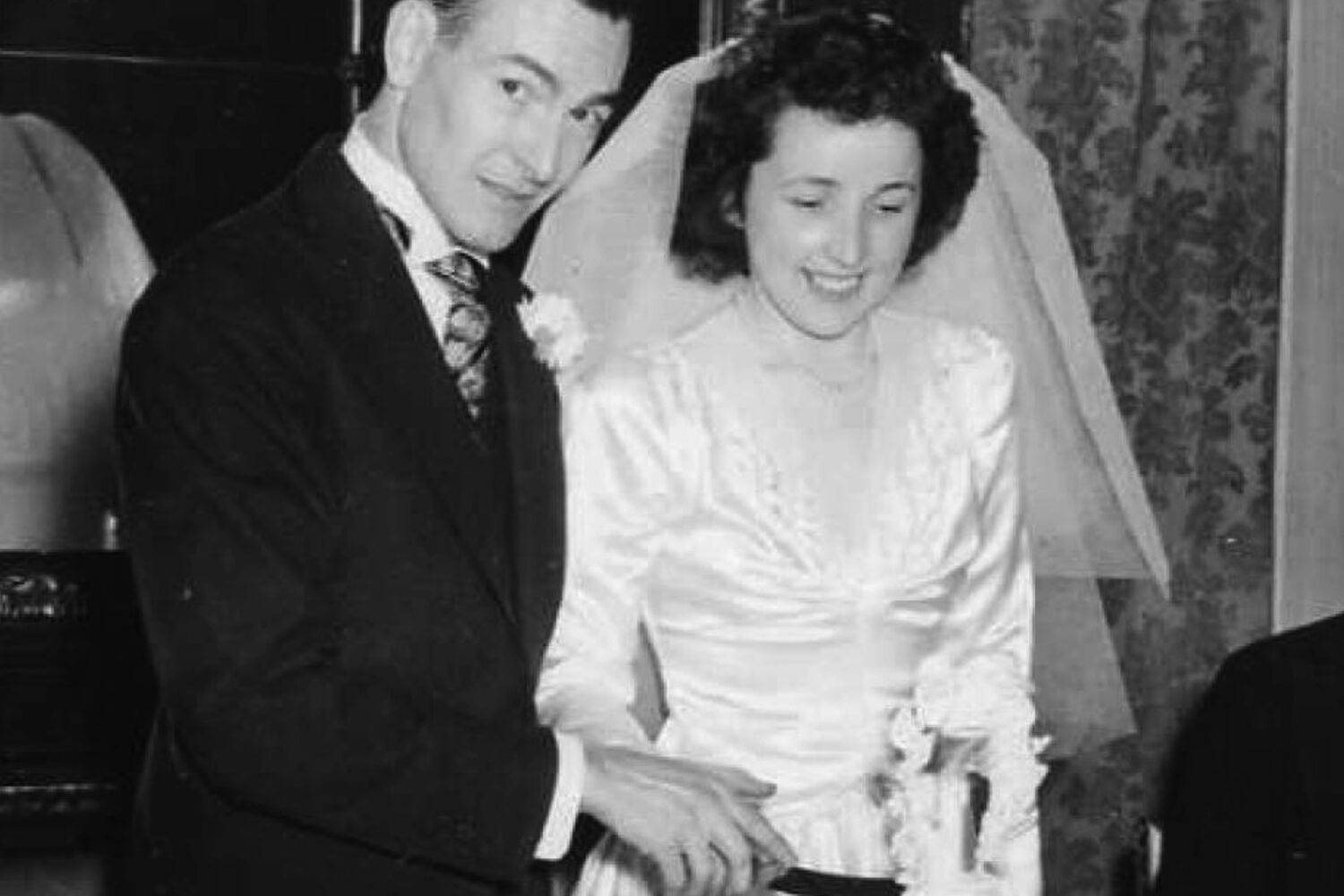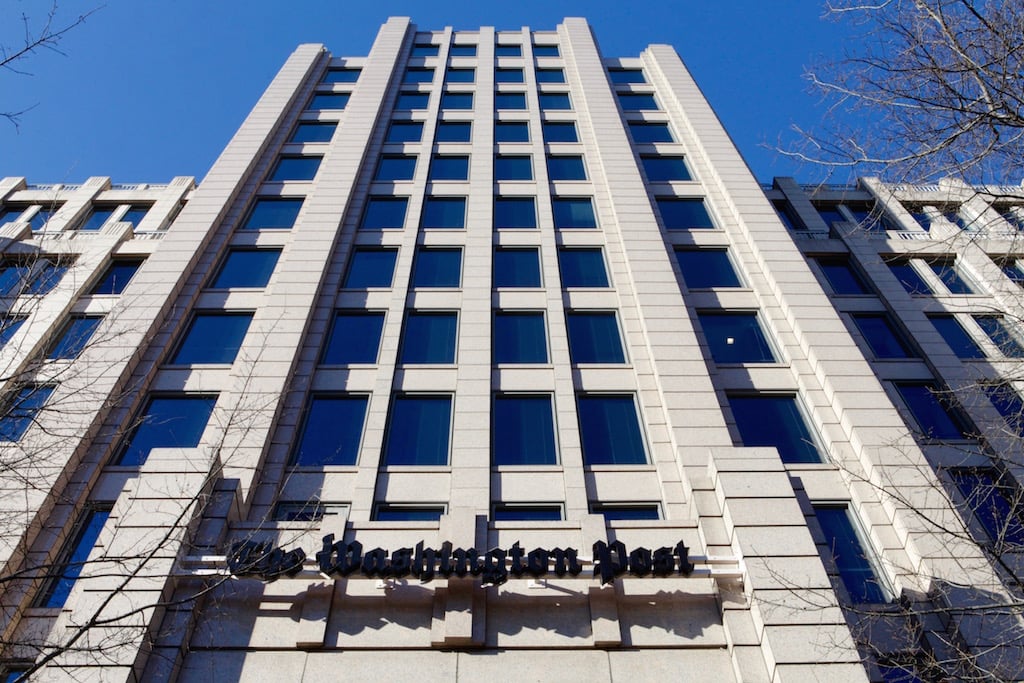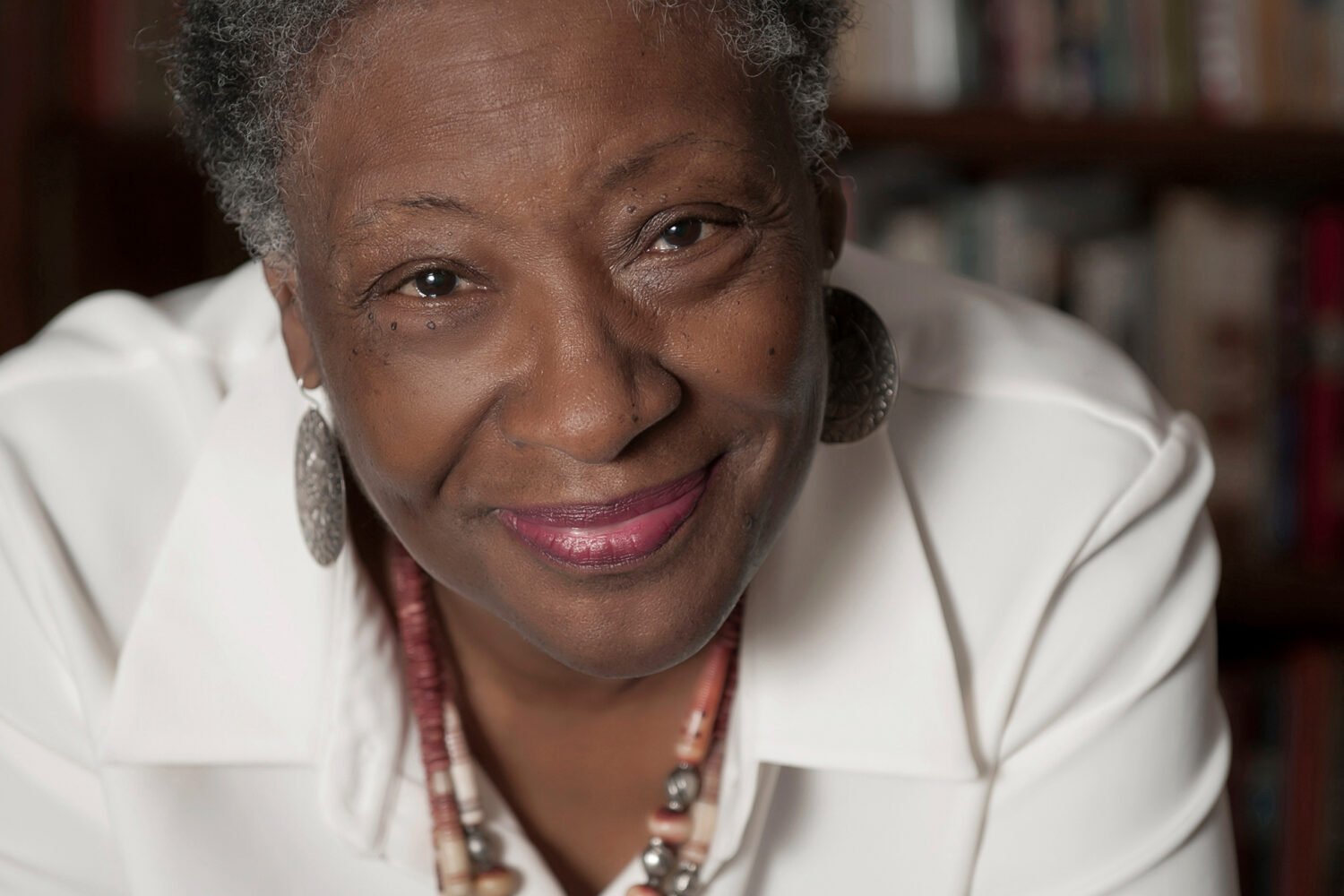It was 1995 and I was the editor of Fast Forward, the Washington Post’s new consumer-technology magazine. These were the formative days of the “information superhighway,” and our job was to make the Post a player. So many people with big ideas wanted to curry favor that I set aside one morning a week for drop-bys.
One of them was a guy named Jeff. He was short, with an uncomfortable smile, thinning hair, and a somehow febrile affect. He’d been a tech guy, then a money guy, till he saw his opportunity: He’d build the world’s biggest bookstore, but—get this—on the internet. I’d heard dozens of similar stories from people trying to sell airline tickets, Florentine glass, and pet food online. One guy brought a vest to wear while you listened to music so you could feel the vibrations in your chest.
Amazon, Jeff explained, was headquartered in his garage. He told me he’d been up late packing books with his wife. I asked some obvious old-media questions: How did he intend to beat Borders and Barnes & Noble, which were also getting into online fulfillment? If he sold for less, how would publishers feel? He showed flashes of the impatience smart people sometimes have with journalists. As I remember, he didn’t have great answers. As for his product, even in a time of operatically hideous websites, his struck one of the lower notes. It was the color of a bruise, the text pocked with exclamation marks. Its logo looked like a broken lampshade. After a brief demo, I said, “Stay in touch.” There’d be no story in Fast Forward.
Eventually, I left the Post for a startup that seemed like a way better bet than Jeff’s. The outfit had $300 million behind it. I had a big salary and 50,000 shares. It lasted eight months. I’m not good at math, but I think 50,000 times $0 is 0. I now help design websites for the federal government.
But I’ve learned a thing or two and can recognize glimmers of what made Amazon the juggernaut it is. It turned out there was a subterranean force in Jeff that didn’t manifest easily through his Men’s Wearhouse rumple. That ghastly website had an “automated search agent” named Eyes to alert you to books you might be interested in. Amazon offered reader reviews and a daily feature highlighting a book at 30 percent off.
Jeff Bezos became the world’s richest man and bought the paper I once worked for. I subscribe to Amazon Prime, get groceries delivered by Whole Foods (owned by Amazon), listen to Amazon Music, watch Amazon Prime TV, have a Fire Stick and, for some reason, four Kindles. I pay for a digital subscription to the Post. I talk to Alexa, stepdaughter of Eyes.
One Sunday afternoon in 2018, my wife and I were sitting at Fiola Mare’s bar. Up swung an armada of Chevy Suburbans and out stepped the Intergalactic Emperor, his now bald head gleaming like a scepter. He was escorted to a table where he held forth, his companions rapt. I told my wife, “I wonder if I should go say something.” She was horrified. Everybody wants to say something to the world’s richest man. Then I noticed we were near the restrooms—he’d have to pee. When he passed, I’d say, “Jeff, I’m the first person you met at the Post.” We’d laugh.
Bezos’s brunch continued. My wife and I ordered another drink. I was afraid that by the time my moment came, I’d slur, Hey, Zzheff, you prolly don’ ’member me, but I zhaved my head, too! Finally he shook hands with his guests and was swept back into his Suburban. (Among his gifts: an iron bladder.)
I was left with memories of a day long ago. It was in front of me on a website the color of blueberry Kool-Aid: the path to our digital future. I didn’t see it. I don’t know if Jeff saw it. He hadn’t learned to talk about Amazon yet. I hadn’t learned to listen to it.
This article appears in the December 2019 issue of Washingtonian.

